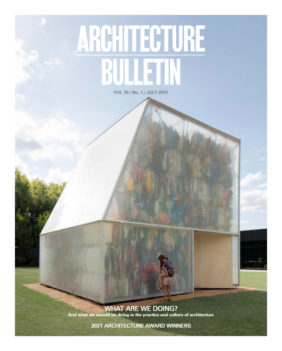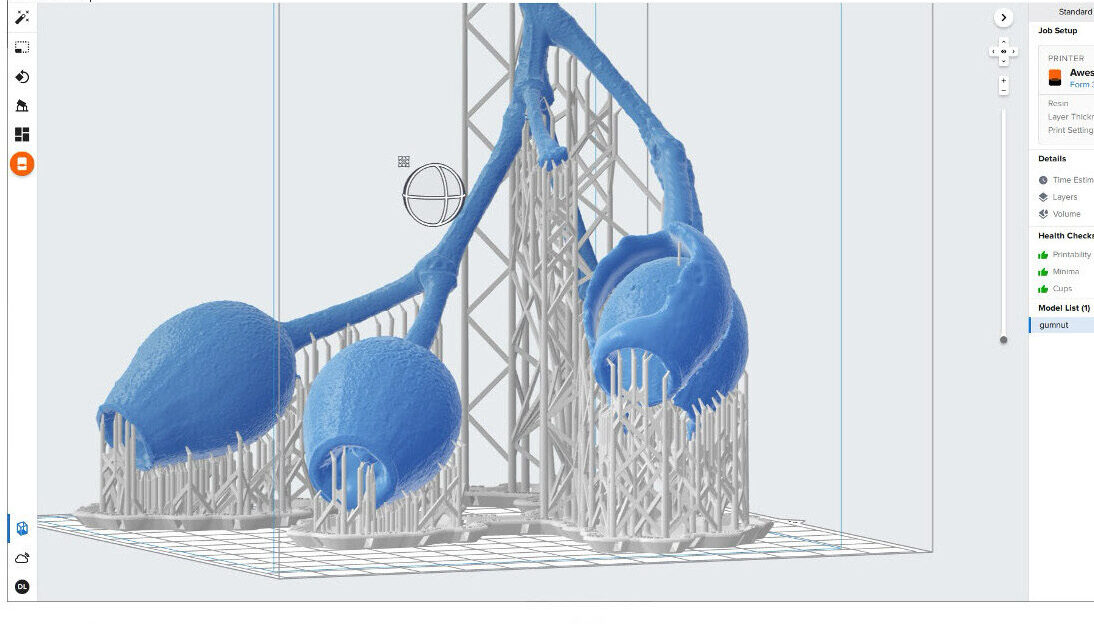How well are we working?
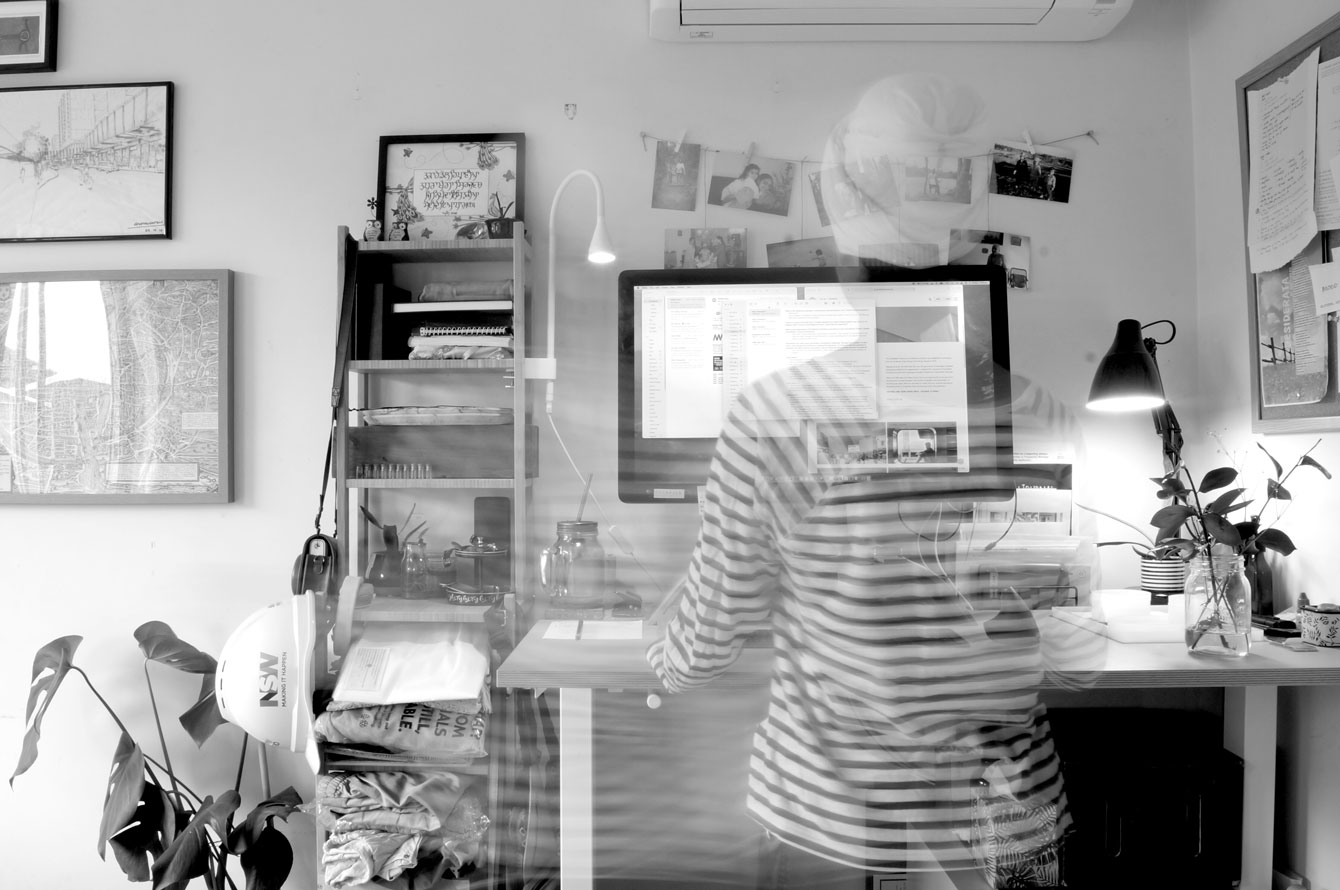
Sahibajot Kaur chatted with Justine Clark – researcher, writer, co-founder and director of Parlour – to discuss the impacts of the pandemic on the ways in which we are working – and should be working. Zooming in from her book-clad home office in Melbourne, Justine provides insights into the preliminary results of the Parlour 2020 survey collaboration: Work & Wellbeing – Australian architecture & the COVID-19 pandemic. She shares her story, observations and experiences below.
I trained in architecture, but I’m a writer and editor now, doing a variety of project-specific work around the built environment. I run Parlour and also work with the Association of Consulting Architects.
Parlour has been very busy lately. The website began in 2012 as part of a large research project and became an organisation in 2015. With the arrival of the pandemic, we had to think about how to support the Parlour community in navigating this new challenge. So, we set up The light at the end of the tunnel – a Friday-lunchtime series. They’re very conversational sessions around all kinds of topics to do with work, workplace and culture, and how we might create whatever is at the ‘end of the tunnel’ of this pandemic. They’re about building community and having a sort of touchstone, as much as they are about imparting information.
We’ve also done a lot of editorial content, which is personal and reflective. An example of this, is a series that people have written about their own work-from-home spaces. We’re also very aware that the younger generation of architects doesn’t necessarily have any experience or understanding of how to navigate an economic downturn, so we’ve got the Path Ahead series, too. We try to use Parlour as a vehicle to share knowledge – particularly across generations. And, of course, we ran the Work and Wellbeing survey, for which we are currently analysing the 2000 plus responses. We’ve got a really fabulous research assistant, Anwyn Hocking, working with us, and my colleague, Gill Matthewson, does most of the data-crunching.
The survey was a result of discussions about smaller, practice-based surveys with Architects Champions of Change, which inspired us to conduct a broader, profession-wide survey. We wanted to get a picture of the profession prior to the pandemic, get an understanding of people’s experiences during the pandemic, and most importantly, understand what people wanted on the other side and how they imagined things might change
I would define wellbeing at work as a feeling of confidence, enjoyment, achievement and learning, and a level of control over your work patterns. Interestingly, 97% of respondents said that they thought there were opportunities to improve work culture and wellbeing, based on the experiences they gained during the pandemic. I think it’s remarkable that only 3% of people want to go back to how things were.
Many of the wellbeing-focused questions were developed by Naomi Stead and Maryam Gusheh, who recently commenced a large research project, about mental wellbeing and architecture. The types of things respondents suggested, were enhanced communication, enabling flexible work arrangements, more support, the improvement of work culture, greater fee and salary equity, more effective management, trust and greater gender equity.
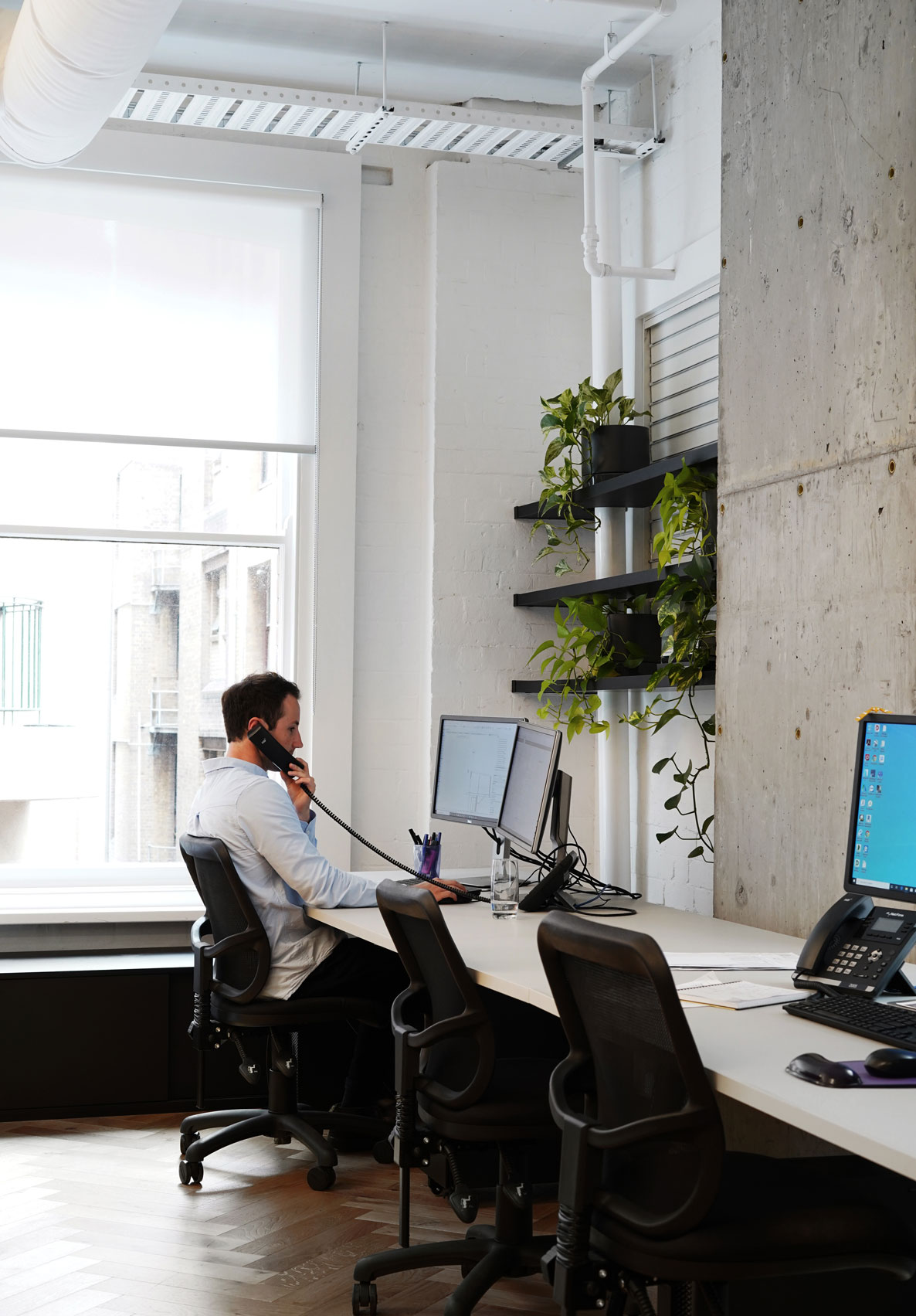
We wanted to use the survey as a vehicle to push practices to use this opportunity to change things, because there is a great deal of inertia, and as such, a tendency to just snap back to the way things have always been done. It is clear that people would like things to change, but the profession is incredibly uneven and diverse in terms of how workplaces operate. There are some very command-and-control style practices, and on the other hand, some that already have great systems around things like flexibility – and these are the practices that managed the pandemic much better.
Three quarters of respondents indicated they were working at practices that were already supporting diverse modes of working – not just in name, but in their daily operation. Such practices are also using their robustness to pick up more work, by demonstrating that they can work in any climate – so it really does also make for a better business case, too, in addition to a more inclusive and ethical one! The argument against flexible work has largely dissolved because people have experienced it and worked out that they can still produce things.
The more shocking end of our results indicated that for some people, working from home provided a sense of safety, which is something that precedes wellbeing – a basic right. Parlour’s work was sparked by the realisation that women were being pushed out of the profession, and harassment in the workplace definitely plays a large role in this phenomenon.
Harassment is still not talked about or is talked about very quietly. When we started the research project in 2011, we thought that overt sexism was not so much of a problem – that unconscious bias as subtle forms of discrimination were the bigger problem. One of the surprises has been how present blunt sexism still is, and the very disturbing reports of direct harassment.
This can range from people feeling a little uncomfortable, to something that can warrant a lawsuit. So, we’re aware that we need to produce a Parlour Guide on Harassment, because architecture is a really small industry, and there is a vast amount of evidence that shows that the women who complain, are the ones who bear the cost. The Australia-wide Champions of Change group have just produced an excellent report aimed at changing this culture. The key argument of this report is that it’s not a workplace issue; it’s a culture issue. It’s an issue for leadership.
On the flipside, there are those who indicated home is not a safe place. There is also a cohort of people who just find working from home very lonely. There is also concern around how younger staff – those who are still learning – are coping with remote work. When asked what they are most looking forward to, about going back to the office, most respondents referred to workplace culture and incidental encounters.
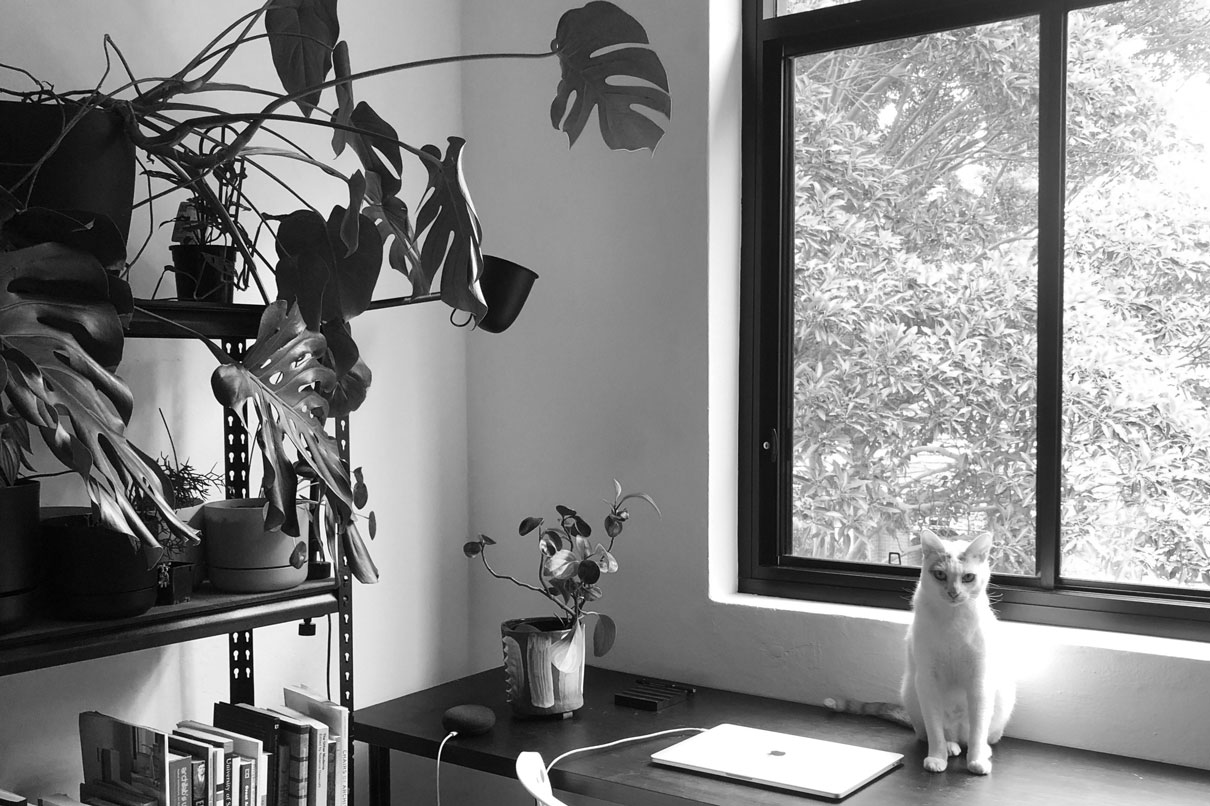
Rather than working from home being better than working from the office, it is about the ability to make that choice. It is about flexibility. Factors like the stage of a project, the stage of people’s lives, commuting times and people’s personal ways of working all play a part in this. There is now quite an awareness of travel distances – particularly in Sydney – and the more progressive practices are conscious of providing flexibility to reduce this.
Almost half of the survey’s respondents were men. In looking at the differences in responses between genders, the largest one presents itself as the presence of career breaks. Unsurprisingly, most women have said that career breaks have impacted their careers slightly negatively, while most men have indicated that career breaks have impacted their careers slightly positively. And where career breaks have been for the purpose of looking after young children, both genders have been negatively affected. Men, in particular, are seen as not being ambitious enough, if choosing to take parental leave.
This reinforces what we already knew and reinforces the need for modes of working that accommodate careers in the long term; not just hours in the short term. I’m interested in the idea of careers that are flexible – how we engage in a profession over 30, 40, 50 years? Not all careers are linear. How can we accommodate different degrees of engagement, different kinds of engagement and different levels of intensity, without those career breaks being seen as career breakers?
I told a past employer I was pregnant, the day after they had promoted me to a new role. They were very supportive – I worked from home a lot – and while I didn’t get another pay rise, that workplace went from not having anyone working flexibly or part time, to lots of people doing it now. I also travelled a lot and took the kids everywhere with me. I think I was known as ‘the woman who had babies with her all the time’. And no one told me I couldn’t do it – so I just kept doing it!
The lack of flexibility in the workplace is also a significant contributor to the under-representation of women in working in architecture in Australia – despite approximately even numbers of men and women graduating from architecture degrees for some decades. Having said that, the proportion of registered architects who are women has skyrocketed since we started tracking it and talking about it in 2012, which has shown the power of statistics. Simply being presented facts which may not be apparent until they are quantified, can, and does lead us into action.
Many employees face resistance in the workplace, in terms of concerns about efficiency and productivity associated with working from home. The pandemic has certainly combated a lot of this resistance. I think there is the potential for significant change, but this will require work. However, we can see that a robustness in modes of working is already starting to gain importance. For example, I understand that the Victorian government is now asking tenderers for some services to demonstrate capacity to deliver should there be another wave of the pandemic. There are always going to be disruptions, and disruptions may become more frequent, so it is something that businesses need to consider for the long term.
It’s a business-case argument about future proofing, having a more flexible and adaptive workforce and having a culture of trust. I think the arguments have to be made in order for sustained change to happen. There needs to be a strong motive to encourage systemic change and providing more diverse workplaces which allow for diversity in employees and, in turn, allow for engagement with wider clientele and the wider community.
Many respondents also indicated that they are more conscious and considerate in their communication with colleagues, as a result of remote working, and that employers are being more proactive in checking in on how their employees are going (perhaps too much, sometimes!) and more mindful of their management, and that’s quite a good thing.
Parlour’s aim is to continue to lead by example, as a way of making change and advocating for wellbeing at work, and a lot of that is arming people with increased skills, arming people with knowledge, arming people with evidence and lobbying for better policy. Wouldn’t it be great if the procuring of buildings required the demonstration of a commitment to equity? We can achieve a certain level of change through individuals, but we need systemic change for real impact, and systemic change comes through organisations. The unions, the people, organisations and businesses all need to work together.
Justine Clark is an independent architectural editor, writer and critic. She is a Director and Co-Founder of Parlour and was a Chief Investigator on the research project Equity and Diversity in the Australian Architecture Profession: Women, Work and Leadership, which led to Parlour. An honorary Principal Fellow at the University of Melbourne, Justine was awarded the Australian Institute of Architects 2015 Marion Mahony Griffin Prize in recognition of her significant contribution to the profession.
Sahibajot Kaur grew up on the land of the Darug people in Western Sydney and is of Punjabi descent. Working as a designer at McGregor Westlake Architecture, Sahibajot is also a spoken-word artist and community organiser. She was the University of Newcastle’s Graduate of the Year in 2019 (M.Arch), having completed her thesis project on the slums of her hometown, Chandigarh. The project received the Australian Institute of Architects Architectural Communications Award and the Commissioner KG Hoffman Prize in Urban Design.
This interview was written in response to the NSW Chapter Editorial Committee’s call for contributions in a context of crisis, seeking perspectives on What are we doing?
